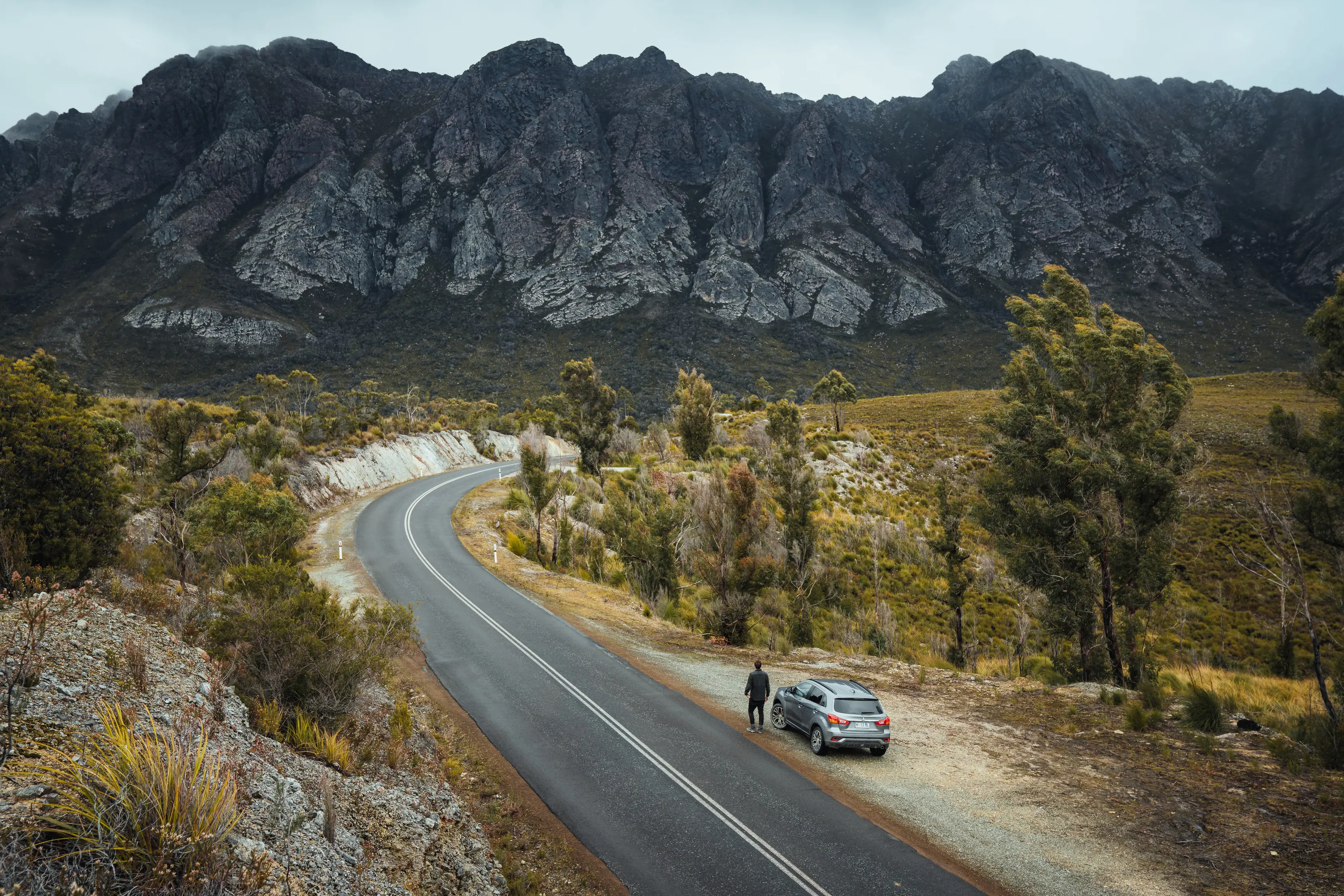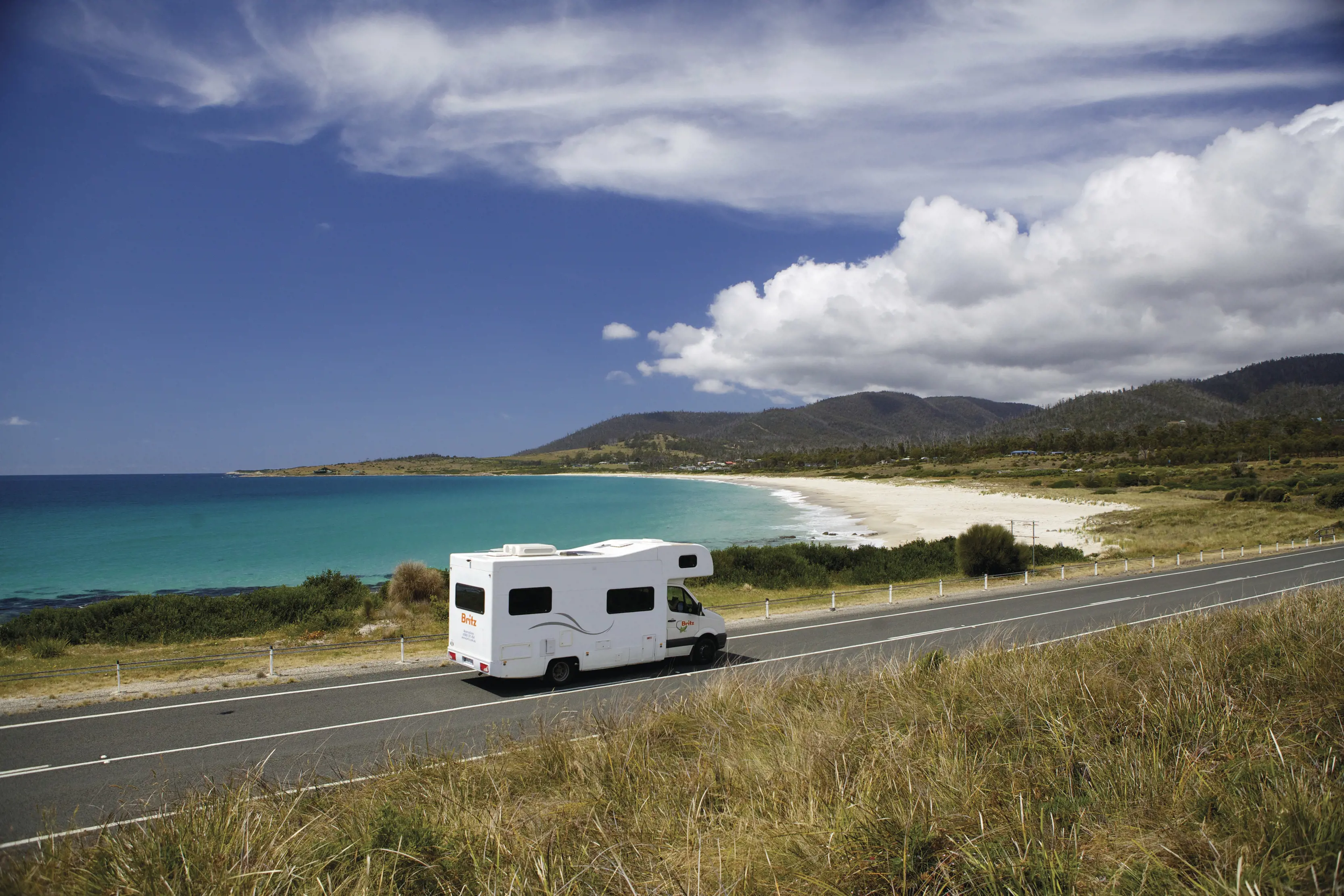
Good roads and scenic views around every corner make travelling in Tasmania exhilarating.
Here are a few things to keep in mind.
- Tasmania is a small state by Australian standards, but it’s a similar size to Ireland. Don't underestimate the time it takes to get around.
- There are some great scenic train trips, but there are no regular passenger train services in Tasmania. Fortunately, there’s a range of transport alternatives.
- Tasmanian tourism operators have COVID-safe protocols. Check with operators for details.
Car and motorcycle
Tasmania’s compact size and diverse landscapes make every road trip an adventure.
Though you can cross the island from Hobart to Launceston in two-and-a-half hours, one of the pleasures of driving or riding in Tasmania are the detours. There are five drive journeys to follow – Great Eastern Drive, Western Wilds, Heartlands, Southern Edge and Northern Forage – and a raft of special-interest trails covering wine, whisky, produce, convict history and more.
Road conditions vary and can be winding and steep, so allow extra time when estimating driving times and distances. Because wildlife is so abundant, native animals often wander onto the road, especially between dusk and dawn – please slow down and take extra care, especially at these times.
Plan a road trip and keep a few things in mind:
- Thinking of hiring a car? It’s important to book well ahead. Also, try exploring alternatives for vehicle hire through holiday wholesalers and car-sharing apps.
- Many visitors travel across Bass Strait with their own car, caravan or motorcycle on the Spirit of Tasmania between Geelong and Devonport. Before hiring a vehicle, check that the hire company allows vehicles to be ferried.
- Some fuel stations close as early as 5pm, particularly in remote regions. Ensure the tank is kept well above empty when venturing out of cities and before driving long distances.
- Travelling in an electric vehicle (aka EV)? No problem. There's an expanding network of EV chargers in Tasmania. Thinking of hiring an EV? Give Evry Drive a go.
- Weather conditions can change quickly, so motorcyclists should come prepared for all-season riding and check local conditions.
- Roads can be winding and steep, especially on the west coast. During the winter months – and occasionally in spring – highland roads can become icy or snow-covered. Check local conditions and take the relevant precautions.
- Be aware that some vehicle-rental contracts have special conditions for using unsealed roads.

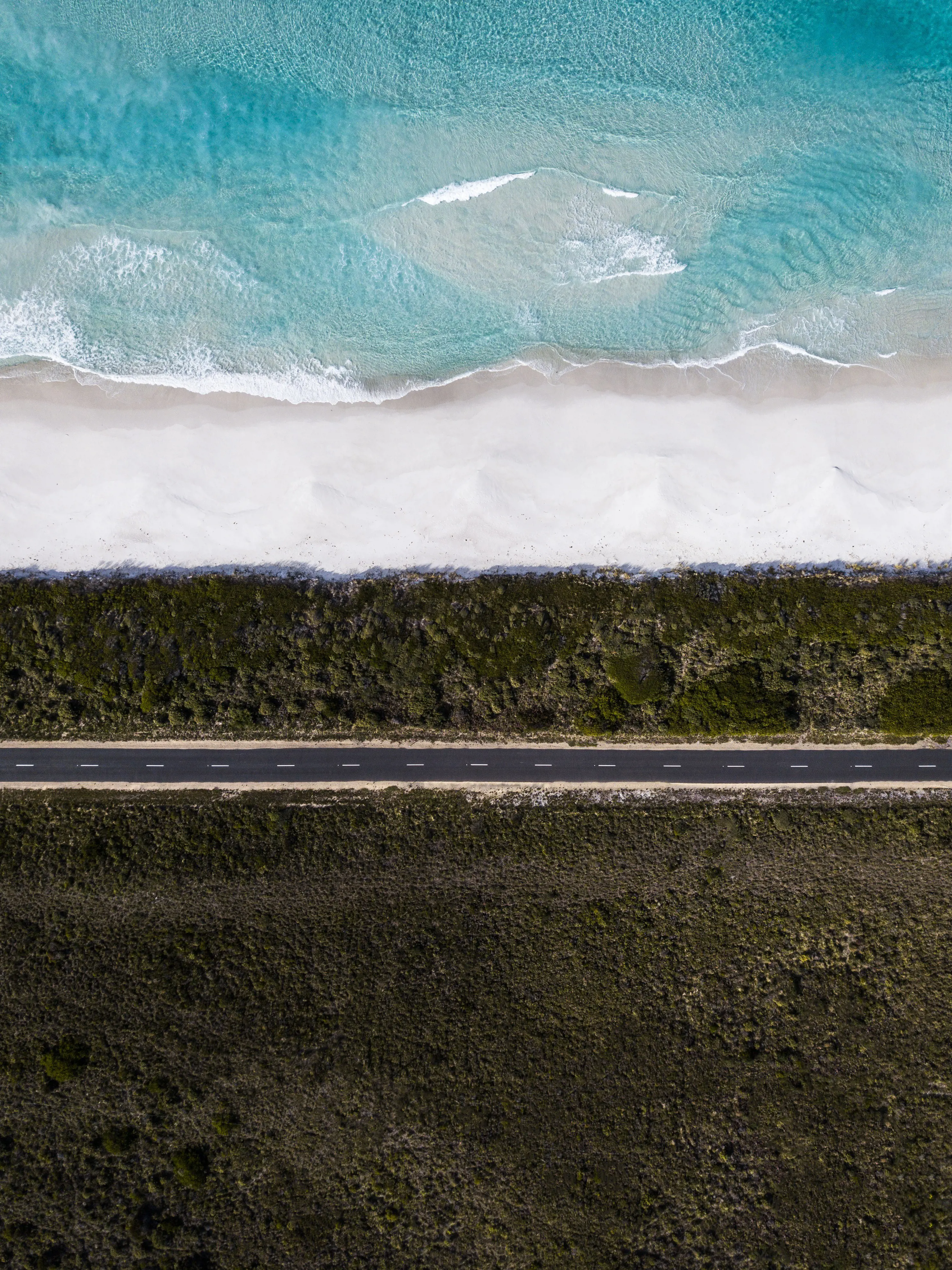
Caravan and campervan
From oceanfront to mountainside, there are more than 50 caravan and holiday parks around Tasmania, providing great facilities in enticing locations (and some are dog-friendly). Many parks and reserves have camping grounds where RVs can be parked, providing a true wilderness stay on or off the beaten track.
Good roads and relatively low traffic volume make for relaxed motorhome driving and caravan towing. Check local conditions and be aware that roads may be narrow, winding and steep in some regions.
A range of RVs can be hired in Tasmania, from pop-tops to luxury motorhomes. Or BYO across from Geelong on the Spirit of Tasmania. For all hire vehicles, check that the rental company allows its vehicles on the ship.
Ferry
Riding the state’s ferries is not just a convenient way to travel to otherwise inaccessible places. It offers an entirely new perspective on the island’s beauty.
- Explore Lake St Clair, Australia’s deepest lake, on the little Ida Clair ferry, a year-round service operated by Lake St Clair Lodge. The lake lies at the southern end of Cradle Mountain-Lake St Clair National Park. It’s the highest-altitude ferry service in Australia. A 28km round trip gives day-trippers a glimpse of Tasmanian World Heritage wilderness, and provides walkers on the final day of the Overland Track with a short-cut to civilisation. The ferry runs from Cynthia Bay, at the lake's southern end, to Narcissus Point at the end of the Overland Track. The ferry also runs to Echo Point. There are different winter and summer timetables, and booking is essential.
- Catch a ride to the wildlife sanctuary of Maria Island, a remarkable national park off Tasmania’s east coast. Take the Encounter Maria Island ferry service, which runs several times daily from the town of Triabunna, a 75min drive (86km) north-east of Hobart. It’s a 30min ferry ride across the Mercury Passage to Darlington Bay on Maria Island. Bookings are essential.
- A historic lighthouse, abundant wildlife and a thriving food scene are just some of the reasons to go to Bruny Island. Get here via the Sealink Bruny Island Ferry, which operates regular daily services year-round from the wharf near the Bruny D'Entrecasteaux Visitor Information Centre in Ferry Rd, Kettering, which is a 30min drive (33km) south of Hobart. The ferry to Roberts Point on north Bruny takes 15-20min, carries cars, requires no booking - and passengers travel free.
- To travel to Flinders Island by sea, take Bass Strait Freight, a cargo shipping service that also welcomes passengers and their cars, motorcycles and bicycles, subject to availability. It’s an 8-9hr trip with a schedule dependent on the tides. Depart from Bridport, a 1hr drive (77km) north-east of Launceston; arrive at the southern town of Lady Barron on Flinders Island.
- There are buses to Mona, but taking a ferry along the River Derwent is more fun. Take the 25min ride aboard Mona’s camouflage-painted, high-speed catamarans, cruising frequently between Hobart’s Brooke Street Pier and Mona. Note: aside from the 99-step staircase, an accessible path is available on site leading from the Mona pier to the museum entrance.

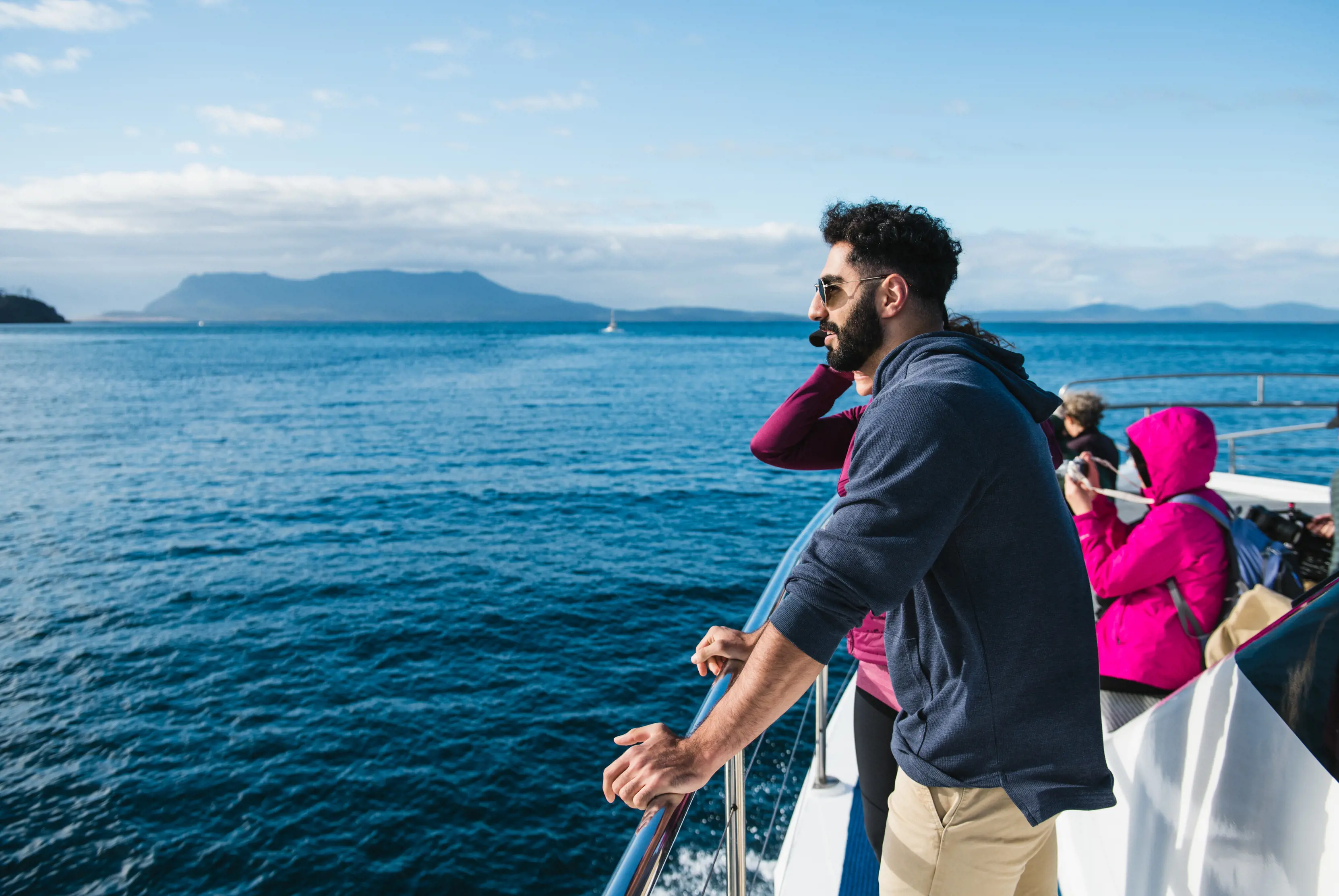
Air
Take to the sky to reach some of the most remote parts of Tasmania.
- Par Avion Airways operates return flights between Hobart and Strahan twice a week. It also flies daily between Hobart and Melaleuca in Southwest National Park, an excellent way for bushwalkers to access the remote South Coast Track. The company also offers a boat transfer beside the airstrip. Plus, the company operates a range of scenic flights and has aircraft available for charter.
- Sharp Airlines operates return services to King and Flinders islands from Hobart, Launceston and Melbourne. The airline also offers charters.
Backpacking
Tasmania has a great range of backpacker lodges and youth hostels where travellers can meet like-minded people and find a comfortable, well-priced place to relax and rest. From a popular hostel in the heart of Hobart’s waterfront, to tin-roofed huts in the bush, there are budget stays to suit every backpacker.
Local visitor information centres are handy resources for finding the right fit.
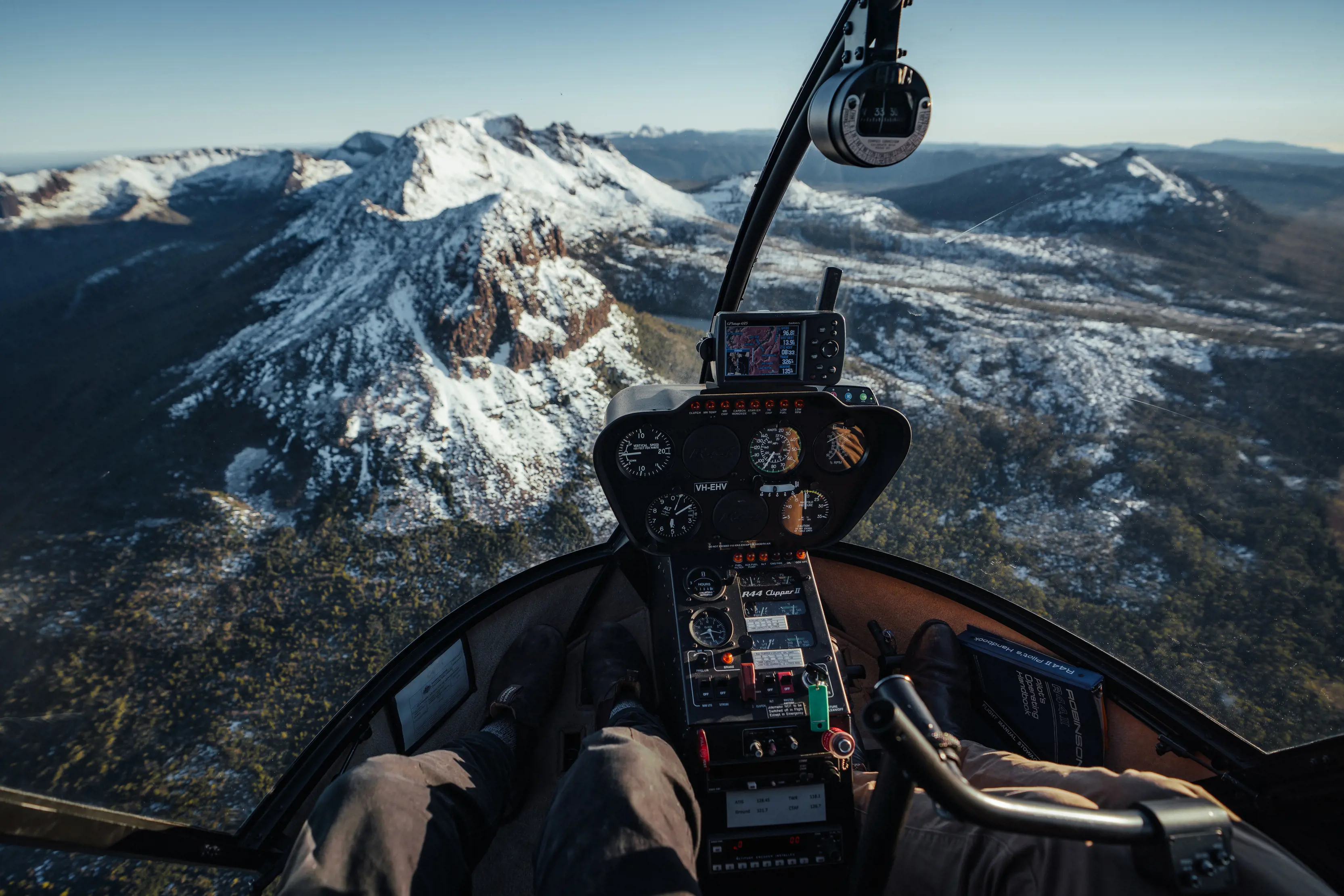
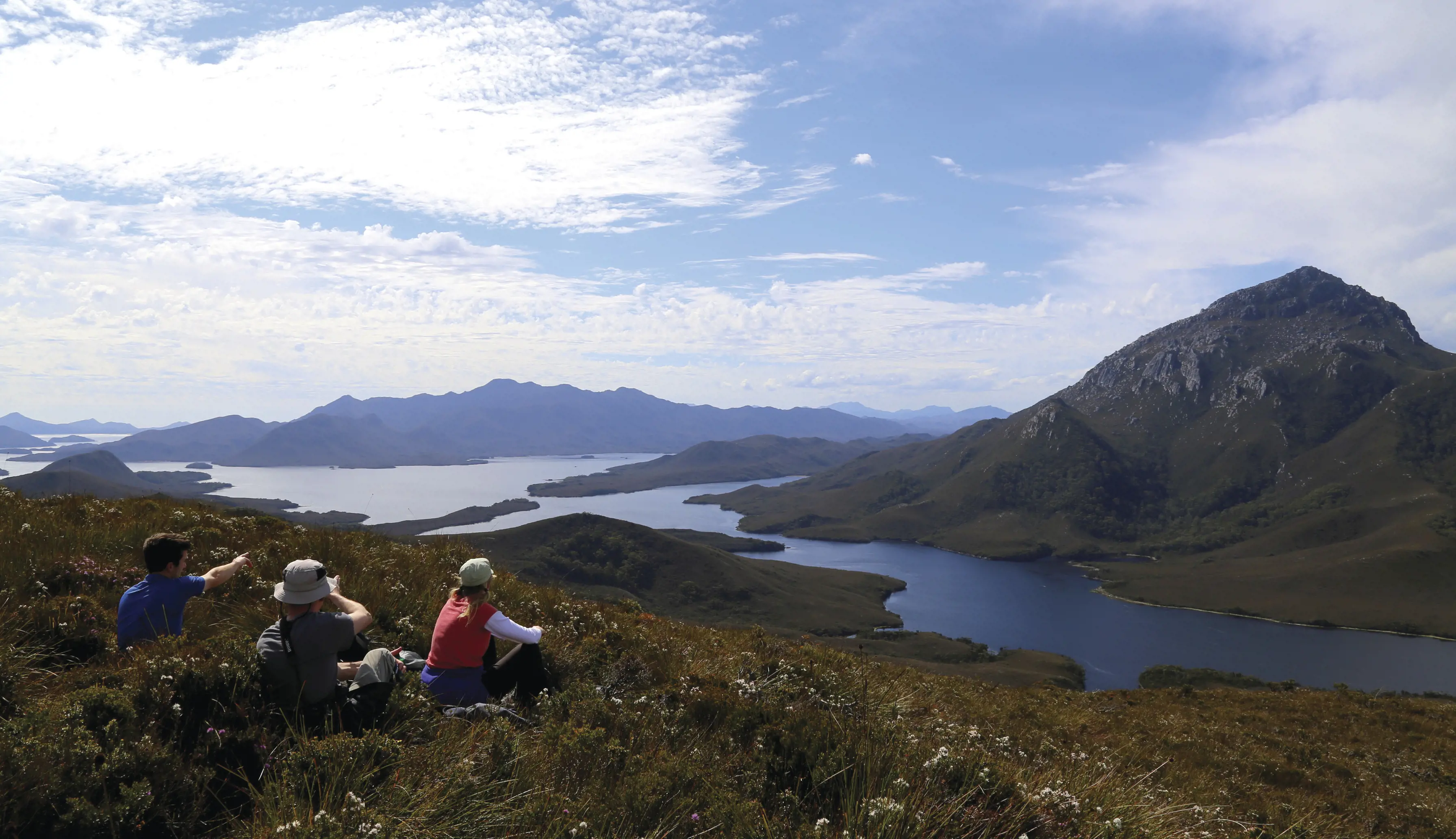
Bus and coach
For many visitors and locals, getting around the island means catching a bus or coach. Schedules can change with the seasons so, again, like the locals, keep an eye on timetables.
There are several companies running specific services and in different areas. In a nutshell, here’s the line-up:
- Metro is the service for bus travel within Hobart, Launceston and Burnie. Consider buying a Greencard, a pre-paid digital wallet with a discount on regular fares.
- Tassielink Transit is the most extensive bus network around Tasmania, serving more than 50 regional and remote towns. It also uses Greencard ticketing.
- Looking to catch a bus between regions? Kinetic offers comfortable intercity coaches linking the likes of Burnie, Devonport, Smithton, Launceston and Hobart.
- For buses connecting Hobart, Glenorchy and New Norfolk, Kinetic runs frequent services and has a cashless electronic card system called TransportMe. The first card is free and the app has live bus tracking.
- For services around Devonport, Ambleside, Latrobe and other locations in the North West, hop onto Kinetic's Devonport and north west service, which also uses TransportMe ticketing.
- McDermott's Coaches runs scheduled services between Launceston and Cradle Mountain.
Coach touring
The great thing about a coach tour? Everything is taken care of. Climb on board a comfortable big bus and enjoy the scenery between Tasmania’s charming towns, World Heritage-listed wilderness, fascinating cultural attractions and distinctive food and wine experiences.
Australia has many coach-tour operators offering excellent Tasmanian itineraries. They vary in length, interests, destinations and budgets – and they can use other forms of transport – so it’s worth researching the options.
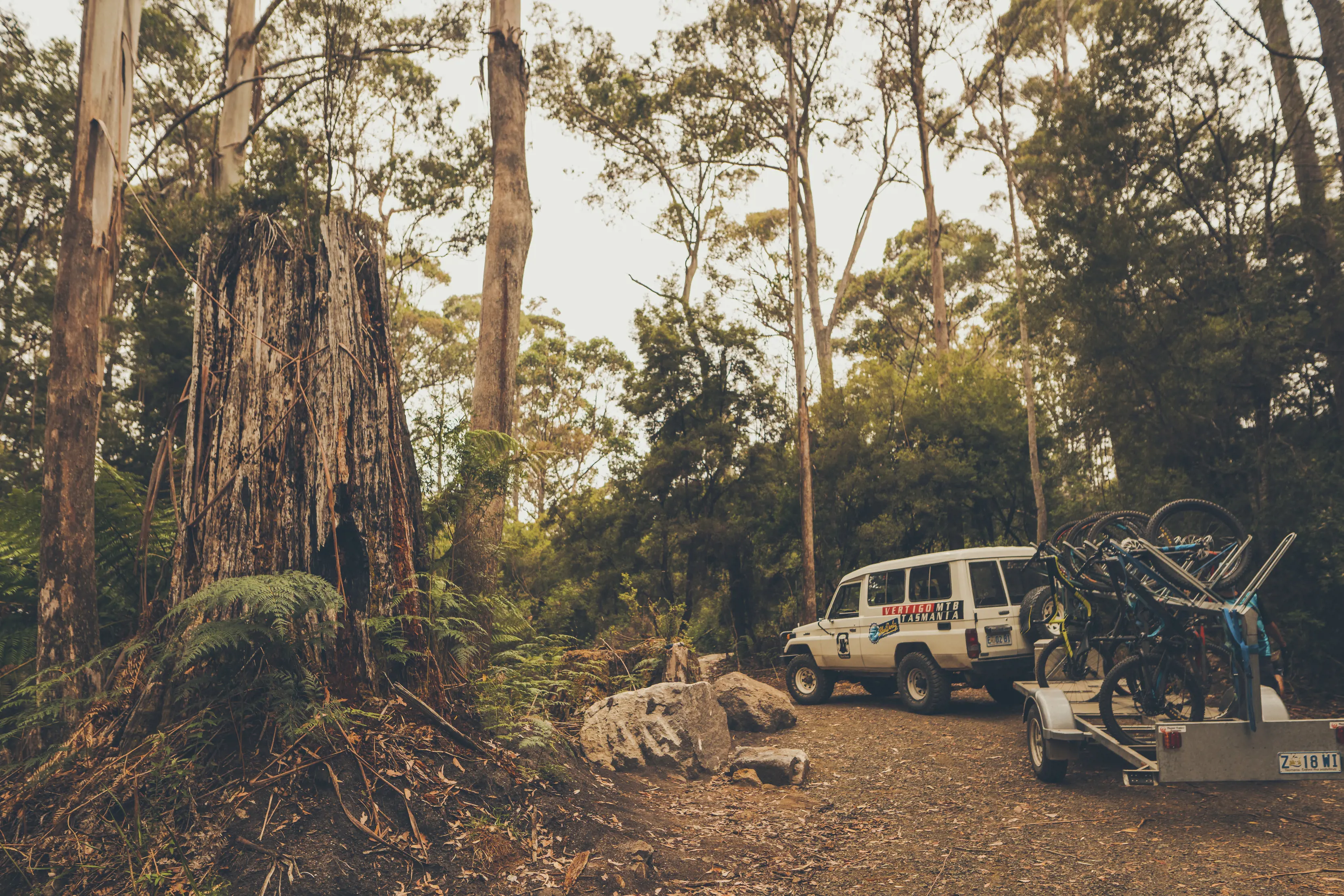
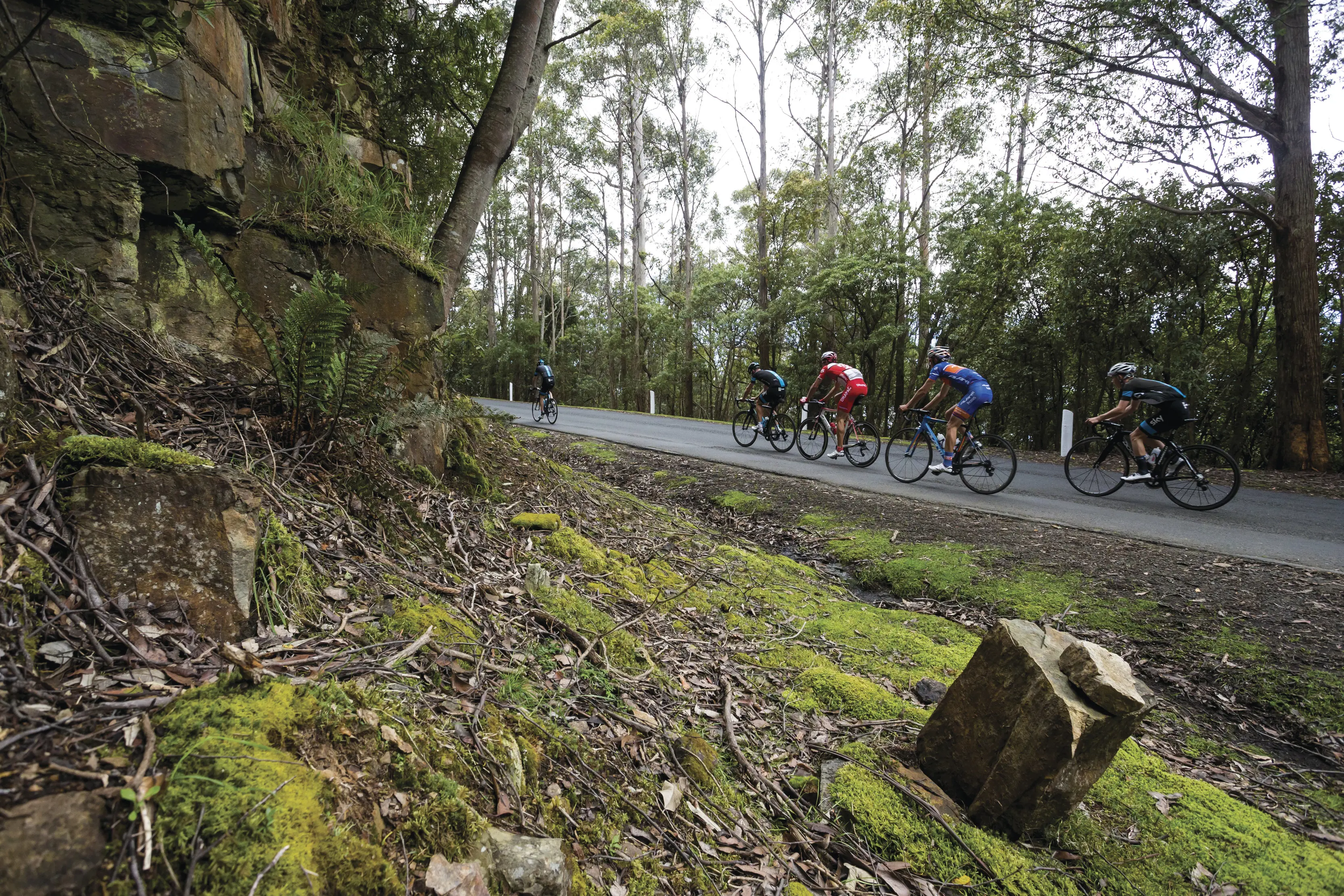
Local tour companies
Board a minibus for a small-group tour. Take a day’s tasting trip along a wine trail. Head out on an afternoon’s organised adventure with knowledgeable locals. Gain deep insights by exploring landmarks with expert guides. Learn more about the natural world on tours with scientists.
Tasmania’s short, specialised bus tours cater for many interests and age groups, and some are tailored for non-English-speaking travellers.
Bicycle
With a relatively low volume of road traffic and outstanding scenery, Tasmania is a great place to cycle, whether it be an hour-long pedal around town to visit cafes and galleries or a three-week cycling journey in the wild.
Travelling to Tasmania with a bike is easy. Grab a bike box or bike bag from a local bike shop before booking flights and don't forget to include the excess weight. Car-hire companies offer a range of vehicles for mountain bikers, including cars with bike racks and utes with soft tail pads. Airport-to-trail transfers can also be arranged. Campervans offer a comfortable alternative, and the Spirit of Tasmania ferry between Victoria and Devonport allows you to bring a car fully loaded with bikes and gear.
Consider a group cycle tour, ranging from a 2hr beach ride, to weekend itineraries, to week-long adventures. For mountain bike riders who love a challenge, Tasmania is the place, with a large array of mountain-bike hubs. Explore independently, or consider tour operators that offer small-group tours and shuttles to access select trails with a like-minded group.
